A visit to the Yamnuska Wolfdog Sanctuary at Cochrane
It’s wonderful to finally get to spend a week with my daughter and son. This morning, I suggested that we go out to the Yamnuska Wolfdog Sanctuary, located 60 west near Cochrane. Despite being on the list of places I wanted to see for many years, Cathy and I had never made time to do it.
Just after 1:00, we were dropping down to Cochrane on Highway 1A, the Bow Valley Trail. The Bow RiversEdge Campground here is where Cathy and I stay when we visit the kids with the RV.
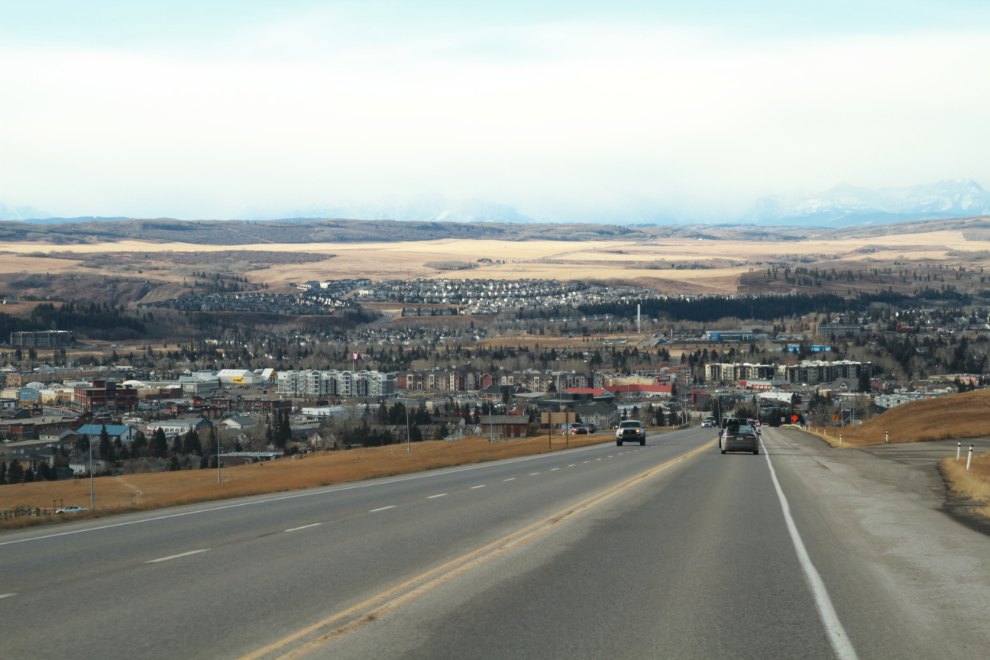
The weather forecast was good for Calgary and Cochrane, with a strong chinook moving in, but quite severe in the Rockies. As we continued west on 1A we could see the storm all the way down the mountains.
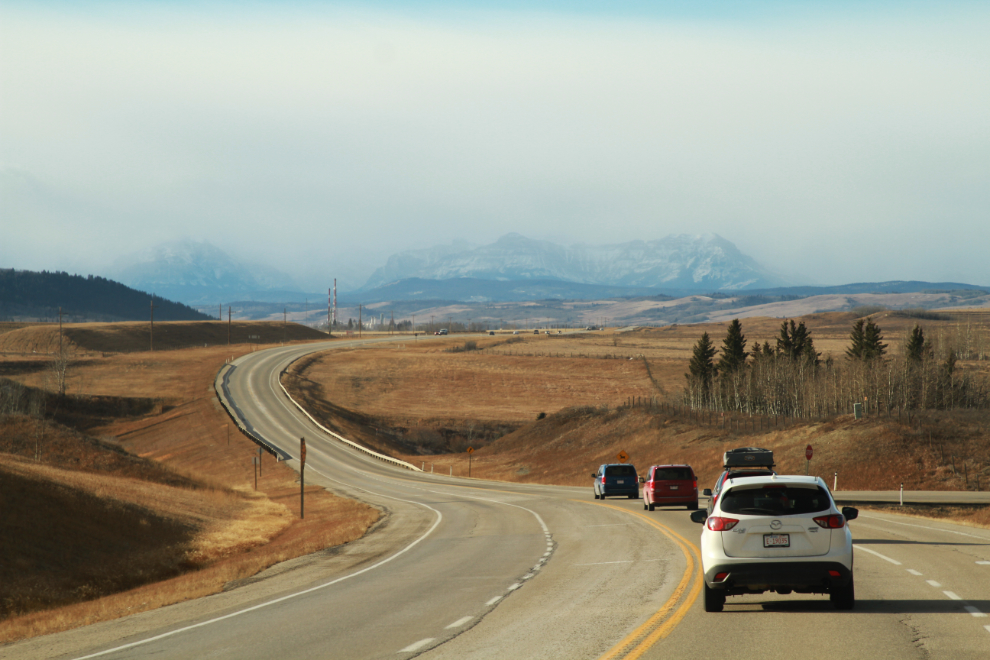
Yamnuska is a little over a kilometer north of 1A on Range Road 53.
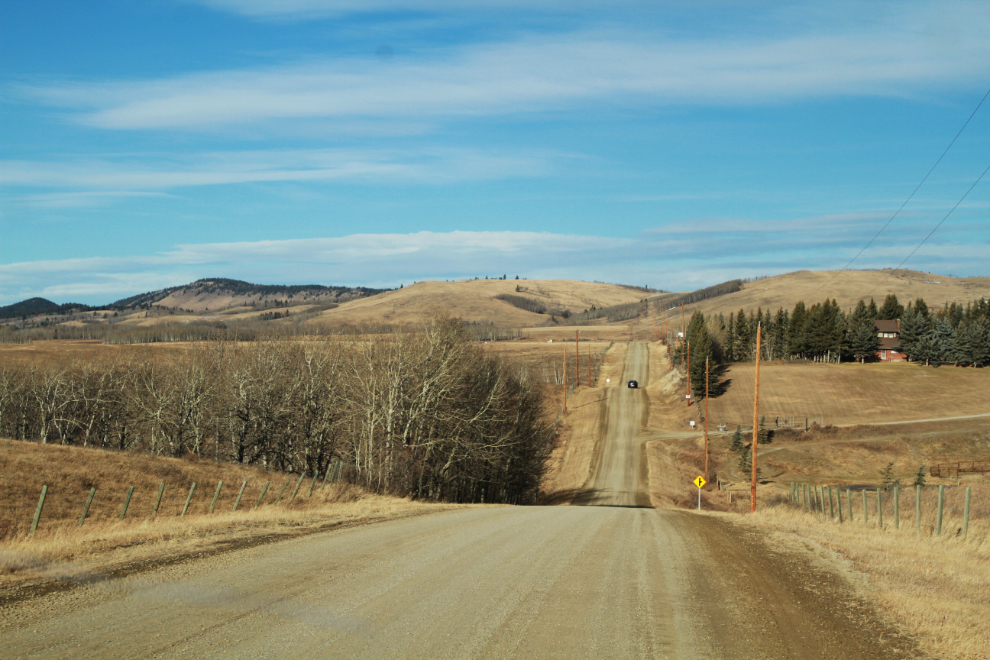
An aerial view of the sanctuary, with its large parking lot. There were only 4 other vehicles when we arrived at 1:25.
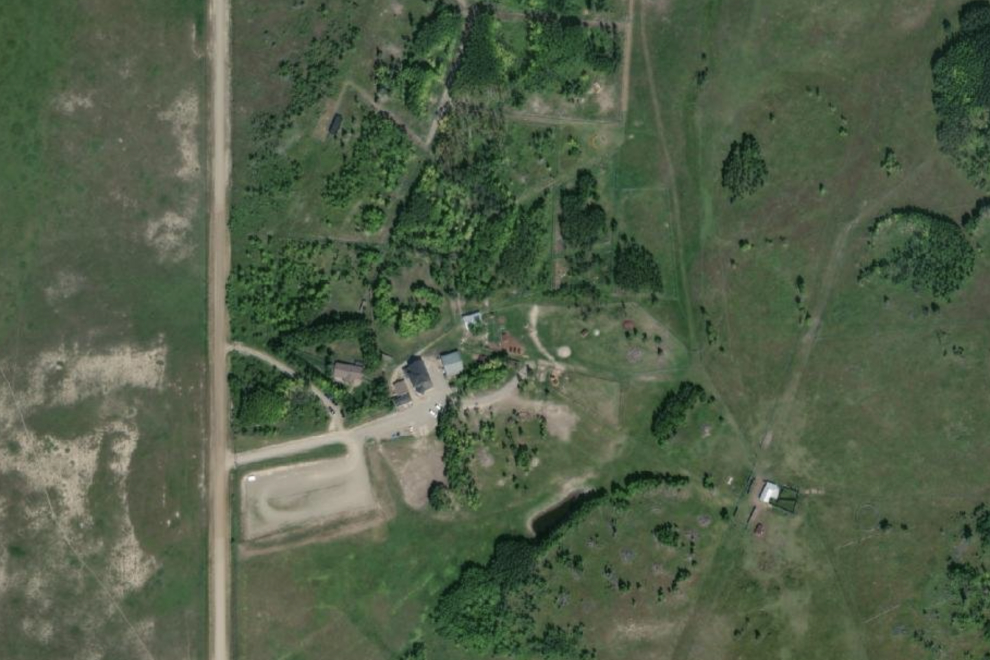
I hadn’t done any research on Yamnuska, and was both surprised and very pleased by the quality of everything, starting with the administration building.
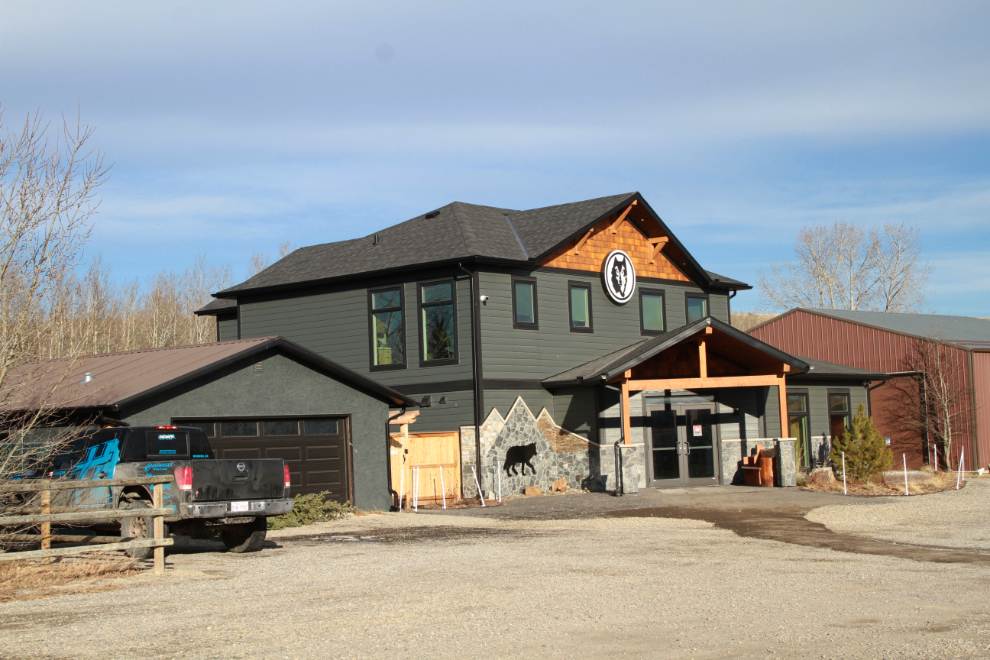
There are 3 options when visiting the sanctuary:
- The Sanctuary Walk for $25 is a self-guided walk;
- The Intro Tour for $38 is a 30-minute guided tour that goes inside one of the wolfdog enclosures;
- On the Interactive Tour which costs $63, you get to meet and interact with some of the ambassador wolfdogs for 45-60 minutes.
While I would have liked a tour, they were all sold out, so we did the self-guided tour.
The sanctuary got its name from Mt. Yamnuska which is the mountain closest to where the sanctuary was originally located, near Exshaw, Alberta. “Yamnuska” is derived from a Stoney Nakoda word meaning “wall of stone” – very apt for that mountain.
The first pen, right outside the back door of the administration building, had a few goats in it.
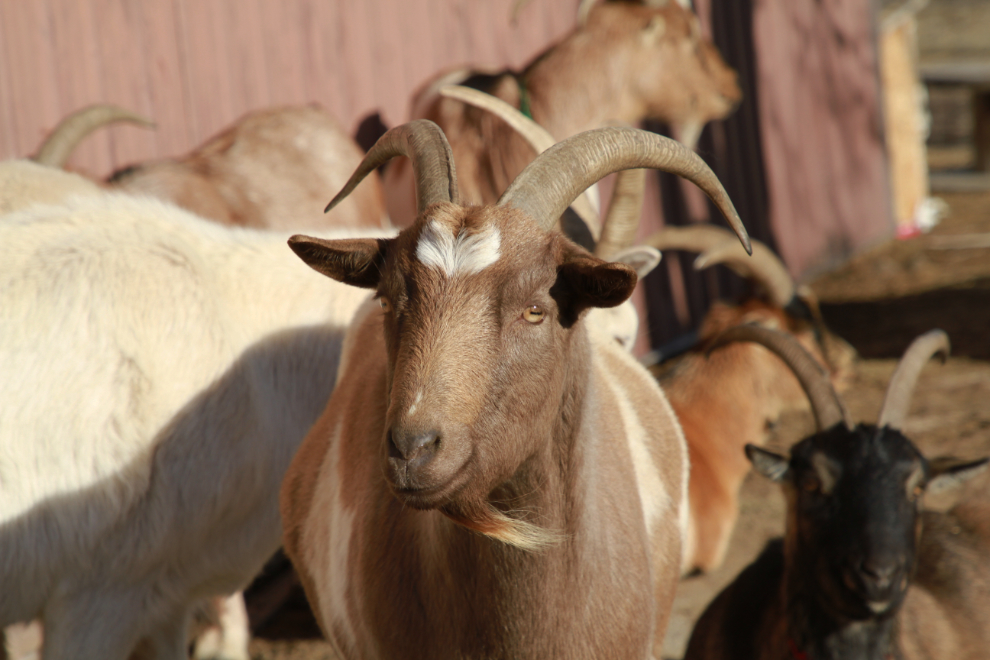
The next photo gives a good idea of what much of the property is like, with gravel paths between the various wolfdog enclosures, which have many interpretive signs.
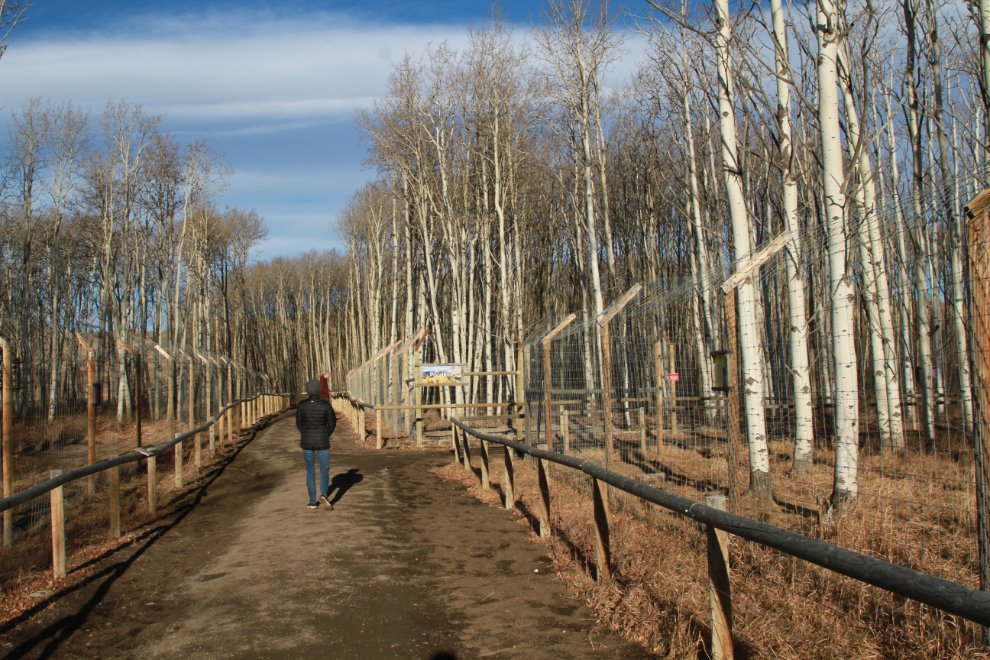
The first of the 35 wolfdogs we saw was Kasha, described as a mid-content wolfdog born on April 28, 2014. The descriptive signs really are excellent: “Kasha came to the sanctuary from Oklahoma as an owner surrender. She quickly bonded with the low content wolfdogs, who enjoy snoozing and playing with her. Kasha is sweet and playful but also very independent; everything happens on her terms.”
Edit: Kasha died a week after our visit, following surgery to remove a growth in her mouth 🙁
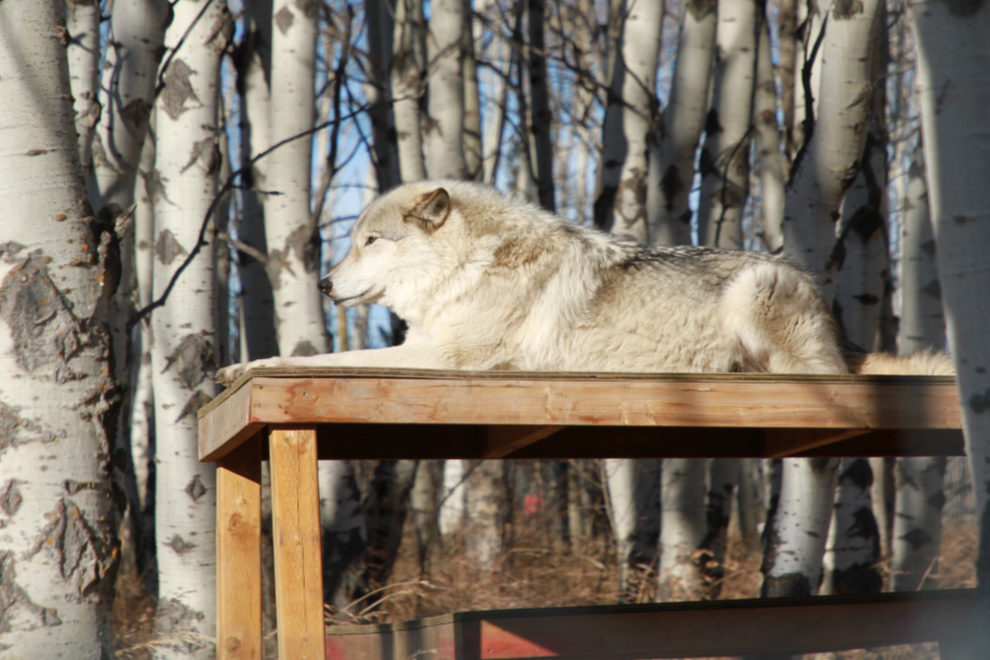
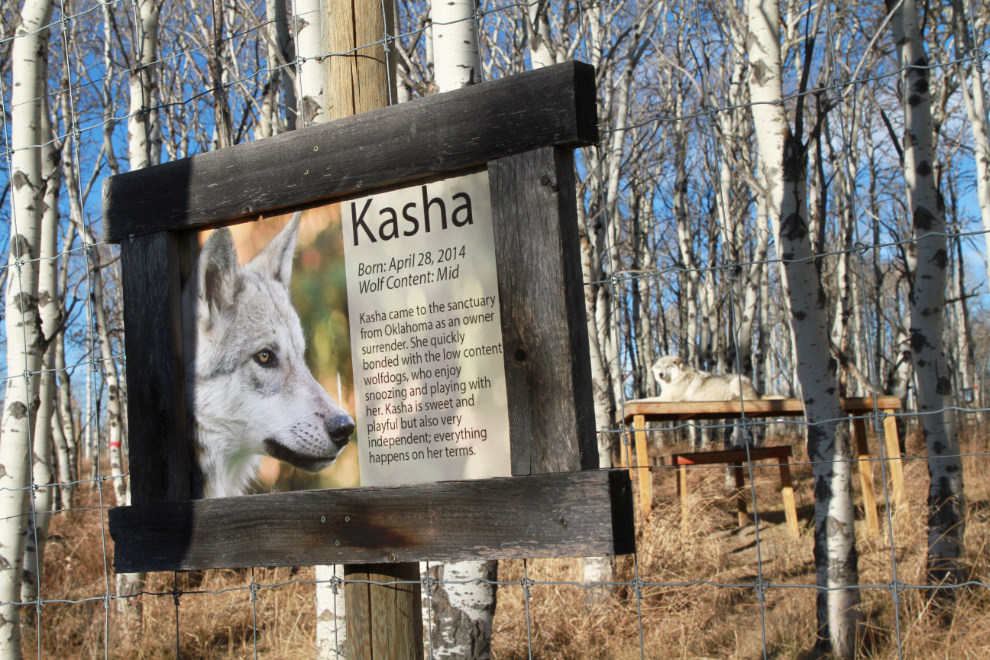
The wolfdog content level refers to how much wolf each animal has in them. A low content wolfdog is mainly dog with a small amount of wolf, while a high content wolfdog is mainly wolf with a small amount of dog. Knowing this fact for each of the wolfdogs was important to me, as a wolfdog joined my family in 2000.
Kayla had been bought by a musher from Alaska from a wolf hybrid breeder in Florida. Her registration said she was 25% grey wolf, 25% German shepherd, and 50% husky. She came to me as a rescue – she had gotten sick as the musher neared Whitehorse on the drive home, and somehow a local woman got her and nursed her back to health. The woman’s lifestyle was not conducive to having a dog, and when she called the Humane Society to re-home her, they declined because of the reputation wolfdogs have for being unpredictable and possibly dangerous. They suggested she call a guy in Carcross who dealt with “difficult rescues.” That guy was me. When I got the call I eventually said I would take her and find a proper wolfdog-appropriate home for her. That idea lasted a few hours – I immediately fell in love with Kayla. It would take a lengthy article to properly describe Kayla, but she was very loving, and watching the wolf in her appear at various times was fascinating. Now at Yamnuska, I could see those behaviours varying by the wolf content levels in each wolfdog. The next photo shows Kayla at our cabin in Carcross in April 2010. She was almost 14 years old when she died in March 2013.
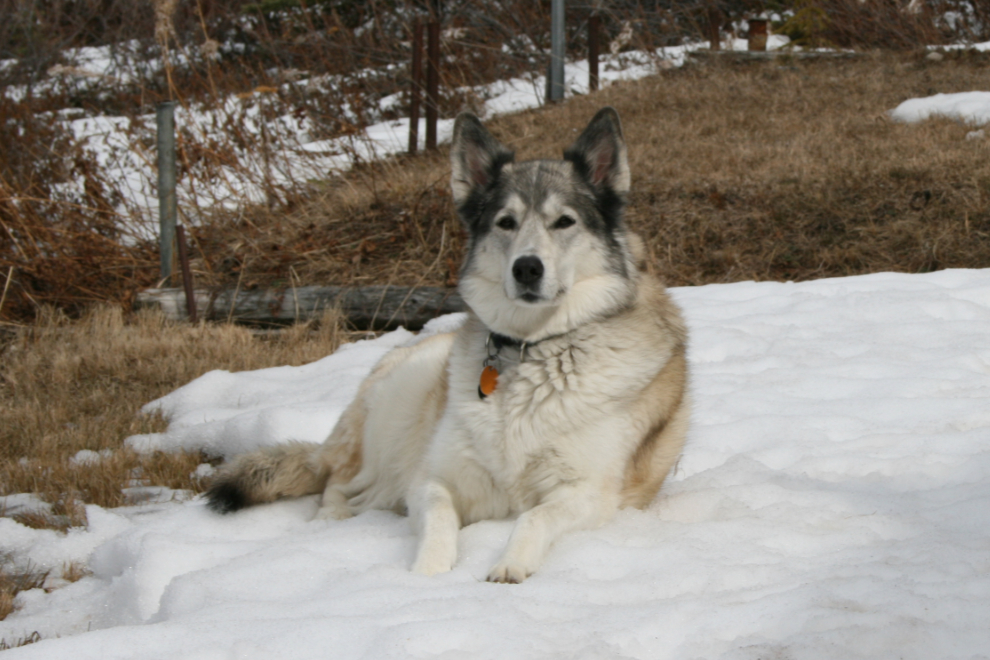
“Why do wolves howl? While wolves communicate mainly through body language, they also communicate through sounds like whimpering, growling and howling! Howling is a form of communication that is intended for distance. It can be a way to keep the pack together as well as to keep outsiders away. Howling can also just be for fun and for social bonding between the pack. Howling here at the Sanctuary can be quite contagious! Once one wolfdog begins to howl, it is very common for the rest of the wolfdogs join in. The wolfdogs all have their own unique howls. The higher content wolfdogs tend to have a more beautiful and wolf-like howl while the lower content wolfdogs tend to have more variation in pitch and tones at one time, much like a Husky.” Yamnuska’s neighbours must get to hear some amazing songs! Just the thought of once again hearing wolves howling puts shivers up my spine 🙂

This new area up towards the northeast corner of the property will be lovely next summer. It will be used to present talks about wolfdogs.
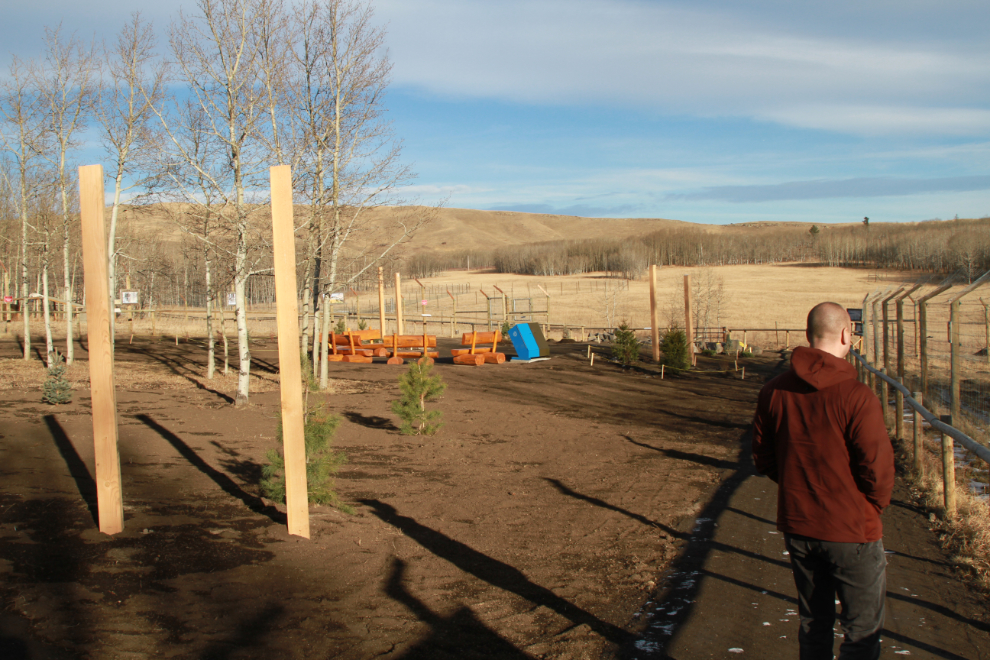
The sanctuary’s commitment to providing each of the wolfdogs with what they need to have the best life possible is heartwarming. The large Norquay enclosure was built for Shadow and Kiba, two of the five wolfdogs among 201 animals seized by the Alberta SPCA in January 2015. Because of the terrible conditions they had lived in, neither of them trust humans, and this enclosure allows them to have a peaceful space away from people. There are many articles online about the Milk River seizures, the largest removal of dogs in the province’s history.
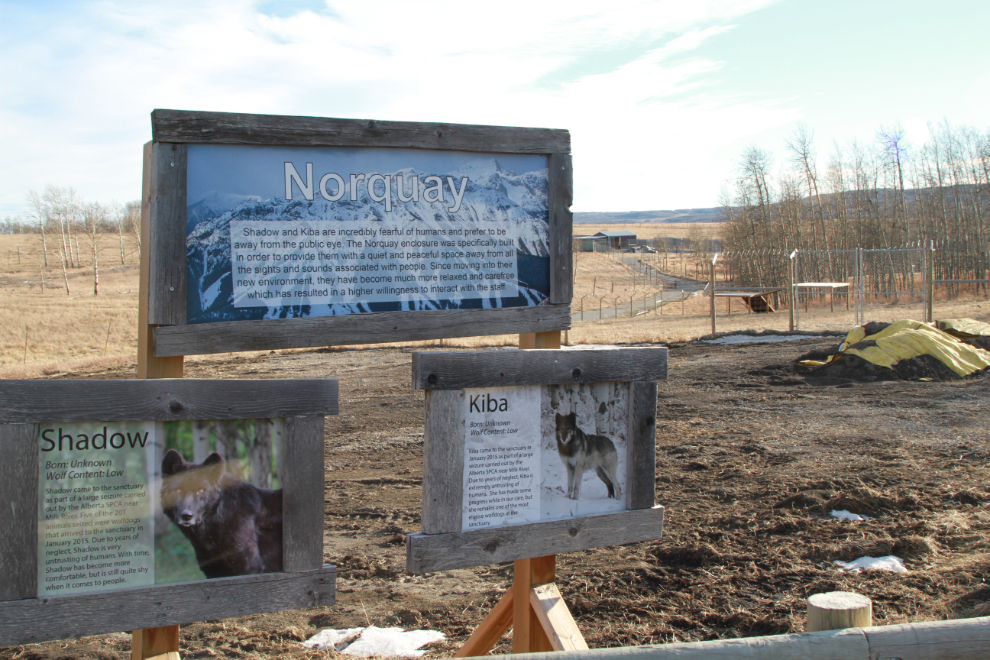
The way he responded to me softly talking to him (after avoiding Steve and Andrea), I would love to spend time with Lichen, one of the high-content wolfdogs. “Lichen came to the Sanctuary from a neglectful and abusive situation. Although he is not comfortable with direct human contact, he does not mind being viewed by visitors and can be quite a curious boy! He adores his pack mate and girlfriend, Mawko, who helps him continue to come out of his shell.”
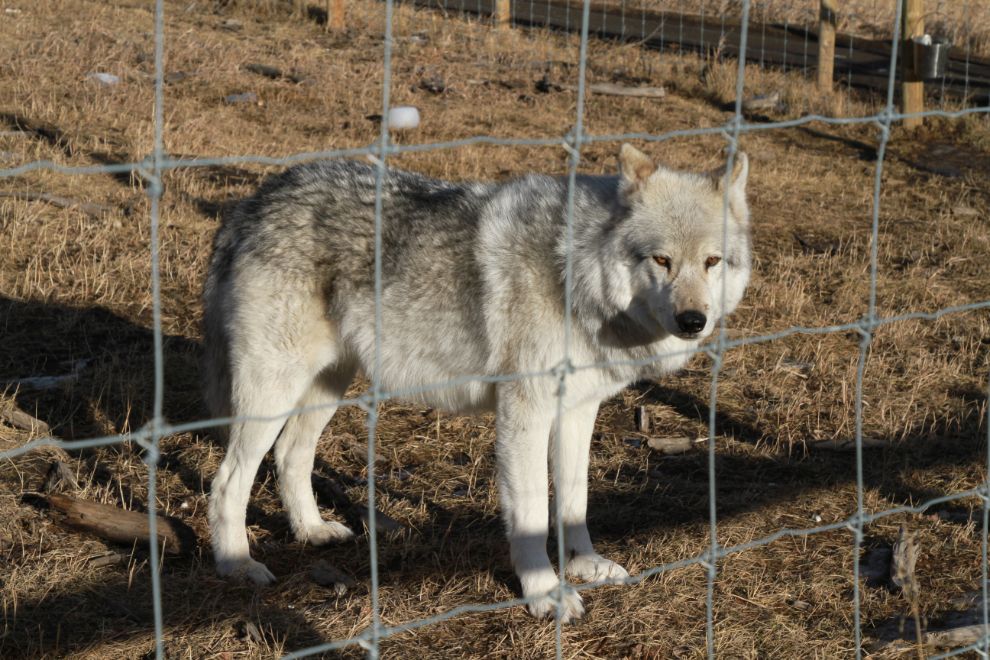
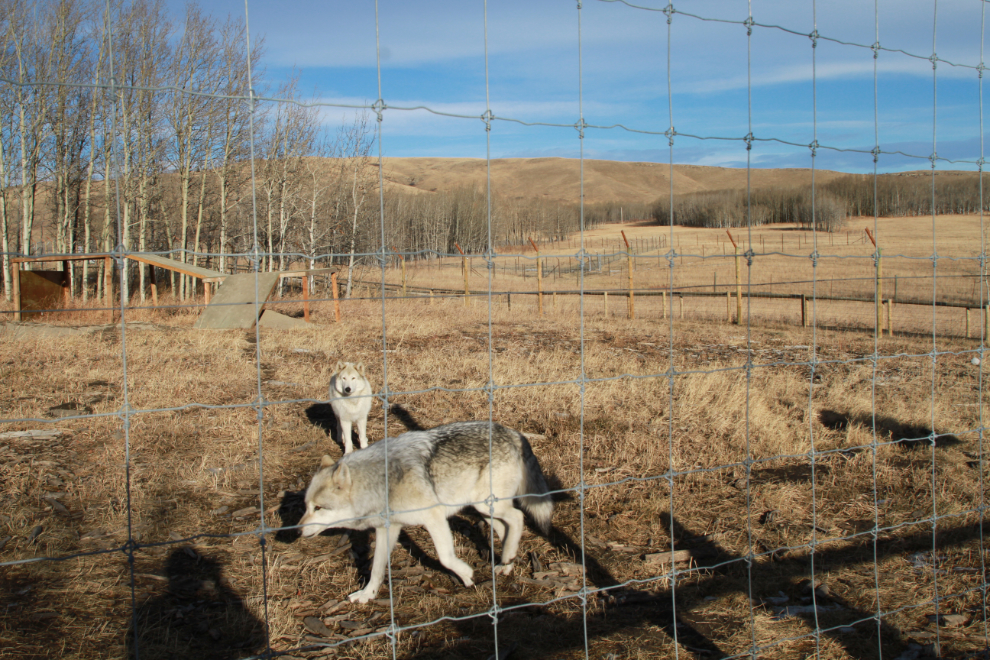
It’s not wolves you need to be afraid of, it’s cows! 🙂
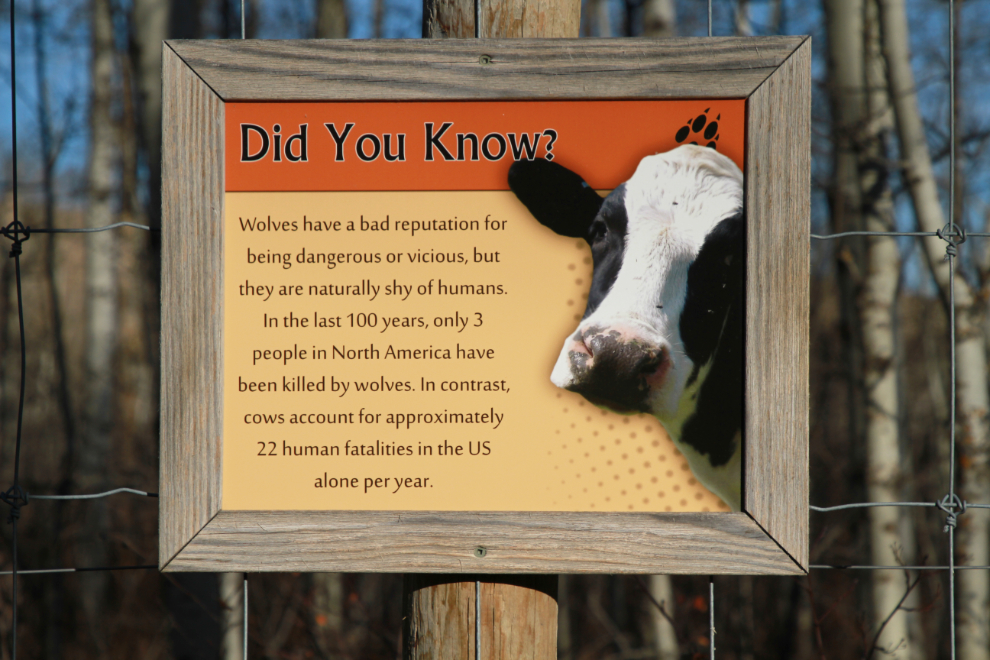
We had noticed in the Daily Schedule that a feeding was to be done at 2:00 at the Grotto enclosure, so we were there for it. The black wolfdog, a 4½-year-old medium-high content, is Enzo, who arrived as an owner surrender when he was about 7 months old. I didn’t catch the name of the white one. I think the staff member was Operations Manager Alyx Harris.
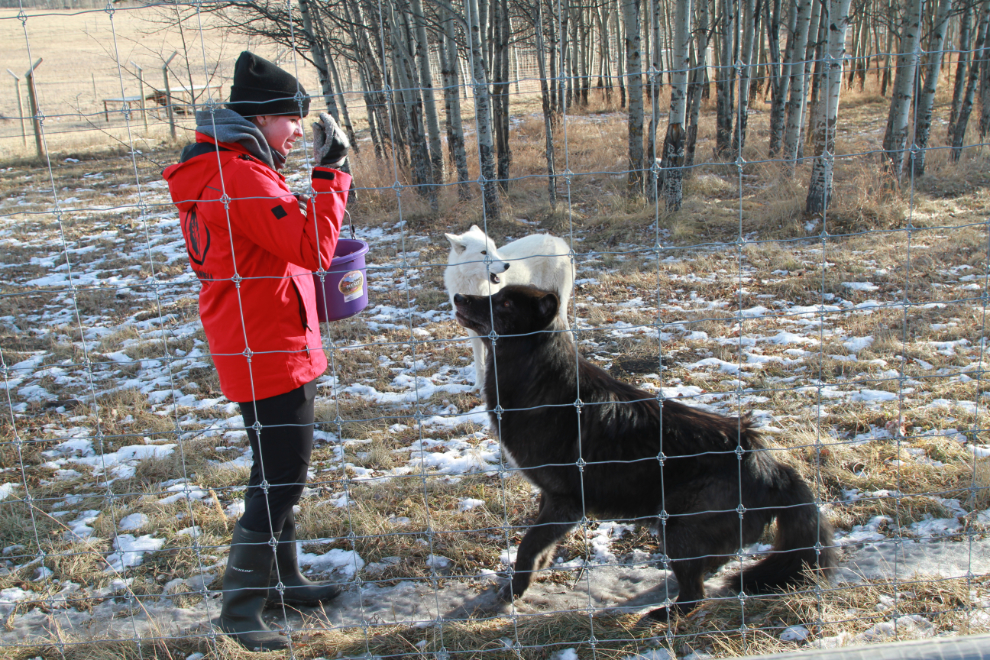
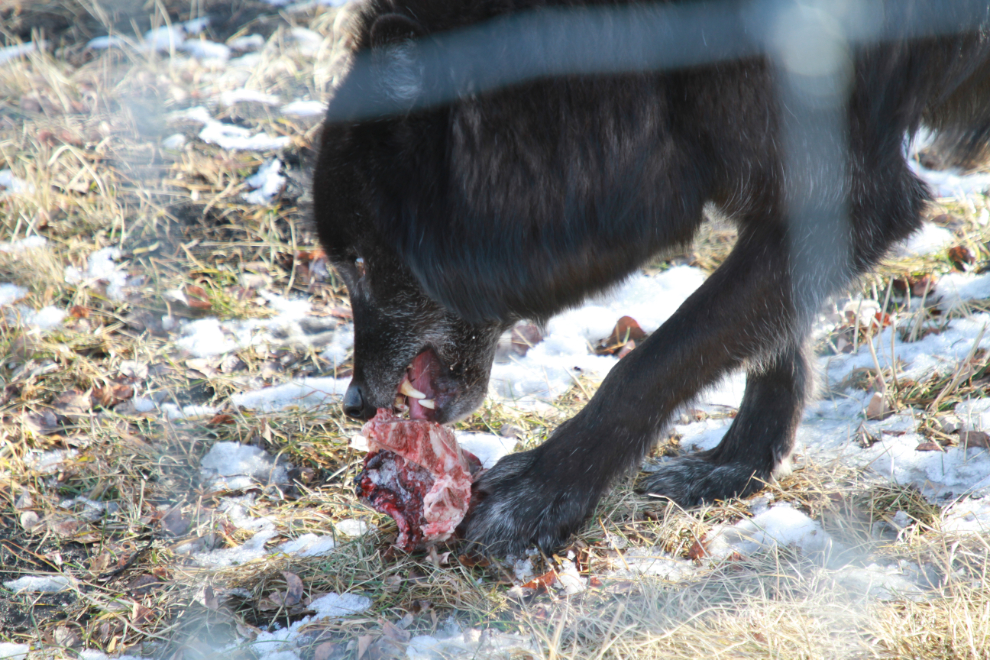

Meeka and Atka are 4½-year-old high-content wolfdogs. They were among 10 wolfdogs and 3 huskies rescued from a bad situation in October 2010. In the first photo below it looks like Atka is curling his lip into a snarl but it quickly turned into a yawn 🙂
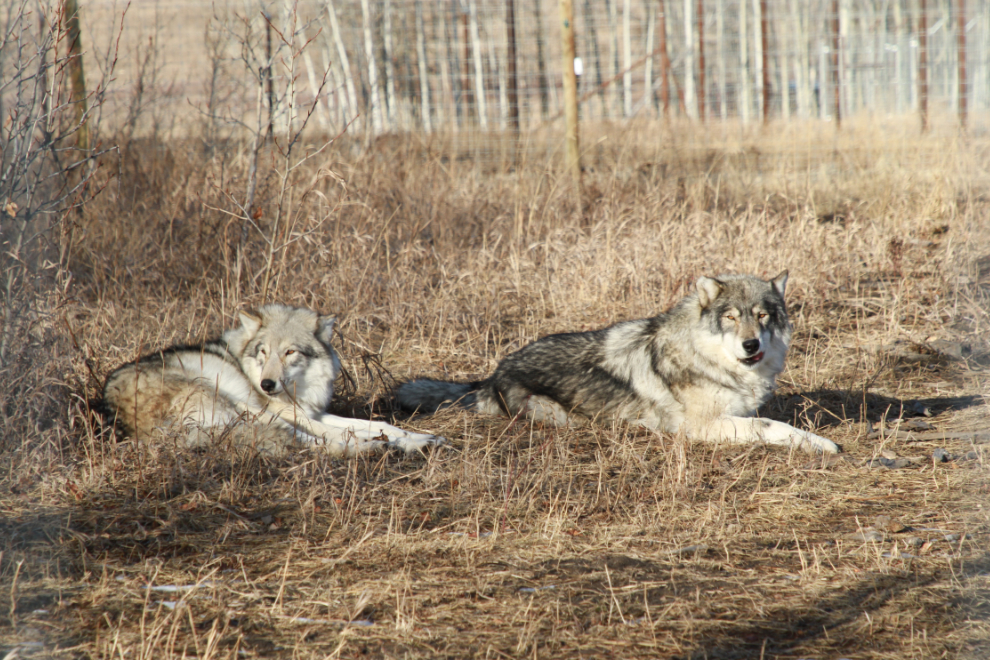
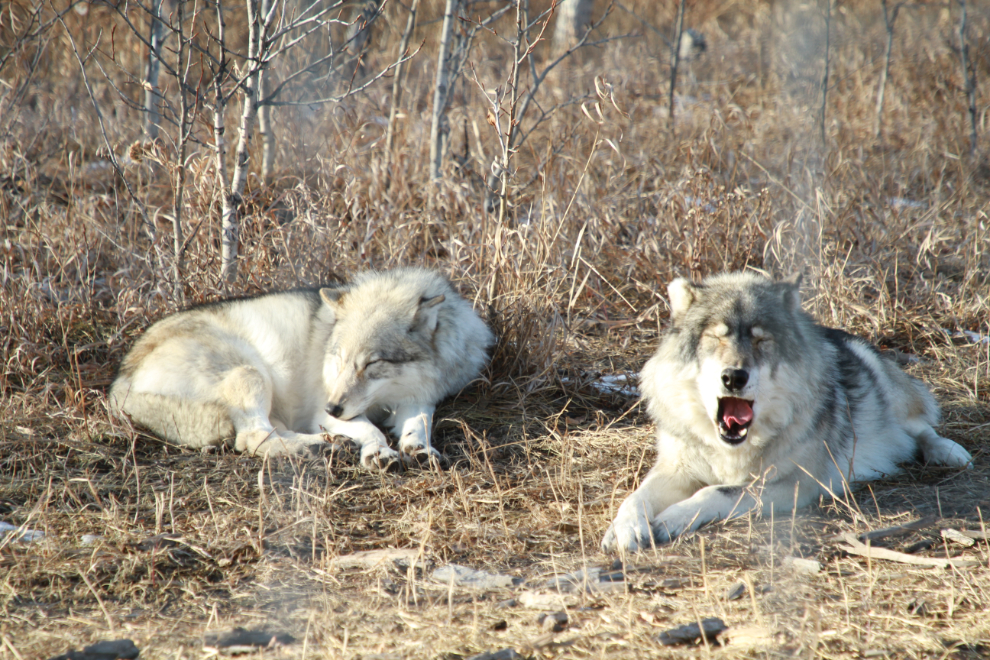
Alpine is a senior high-content wolfdog who arrived at the sanctuary in 2019. Nukka, a high-content 2½-year-old, was part of the large rescue in October 2020 and arrived alongside 9 other wolfdogs. “Even though Alpine and Nukka came from two totally different locations, after they were paired together it turns out they are actually related! Through some research into their lineage we found out that Alpine happens to be Nukka’s grandfather.”
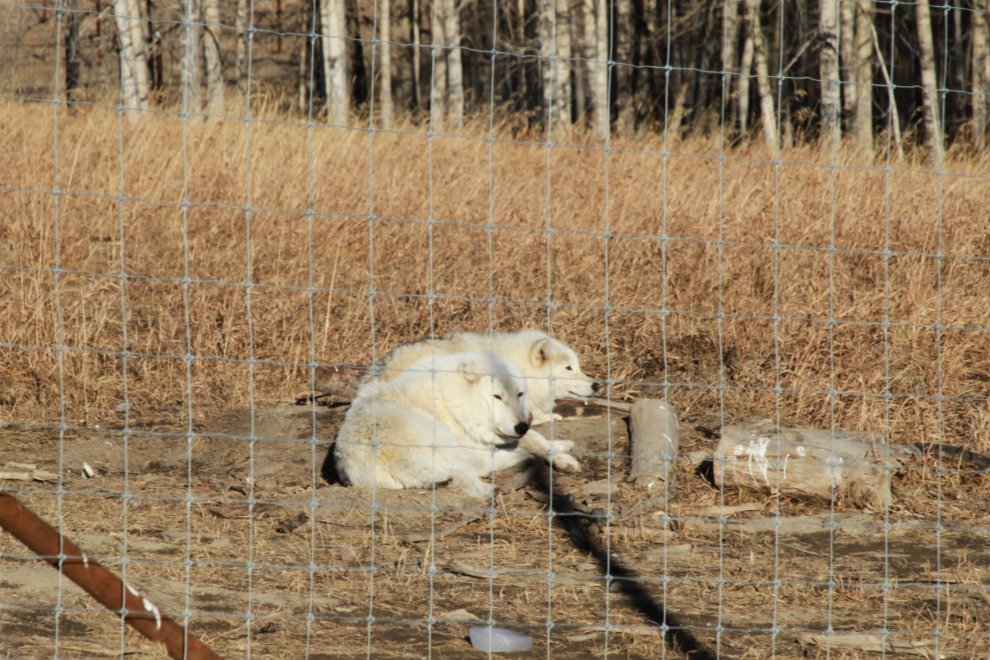
The property adjoining Yamnuska to the northeast is lovely even in November.
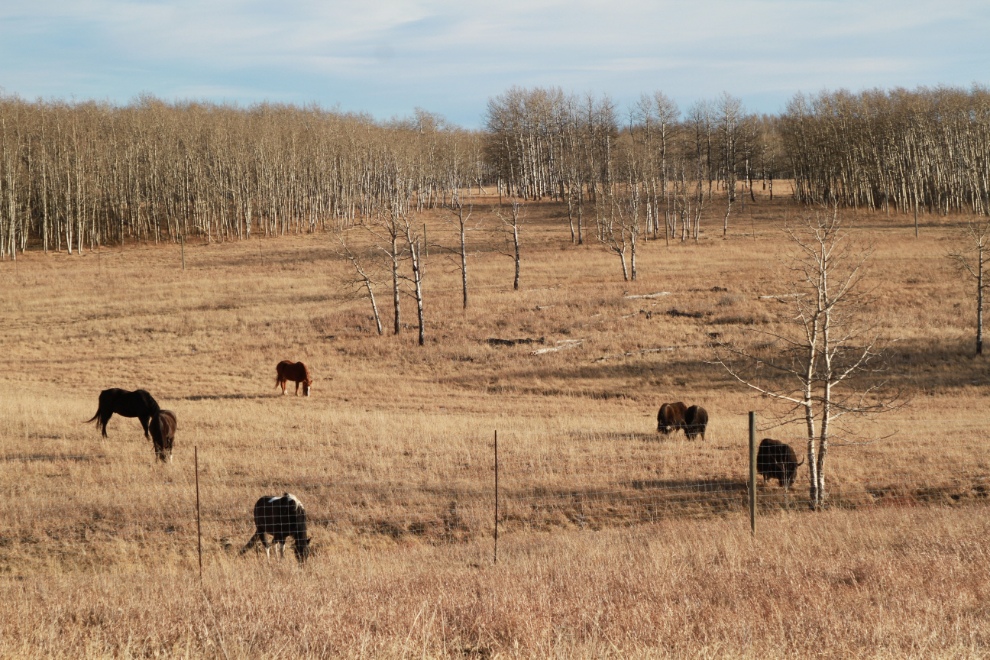
It was now 2:30. Although we’d only been there for exactly an hour, I had walked all I could and it was time to go. On the way back we saw this “wolfdog spa” with a pool – it would be wonderful on a hot summer day! 🙂
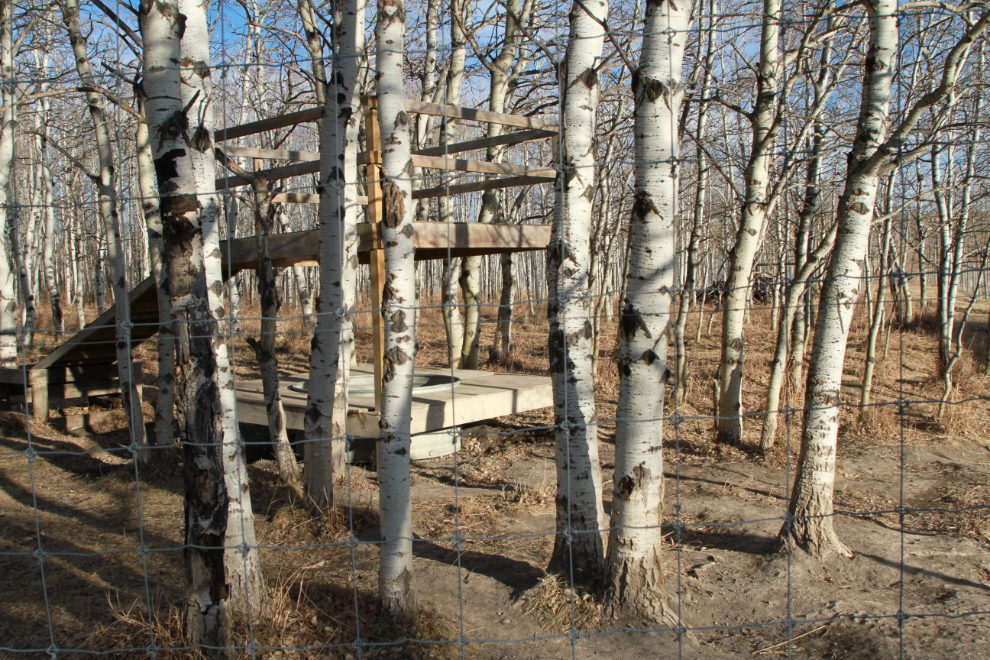
On the way home, we took a short detour to Big Hill Springs Provincial Park, where Steve wanted to show me some improvements that had been made, including a few new bridges on the walking trails.
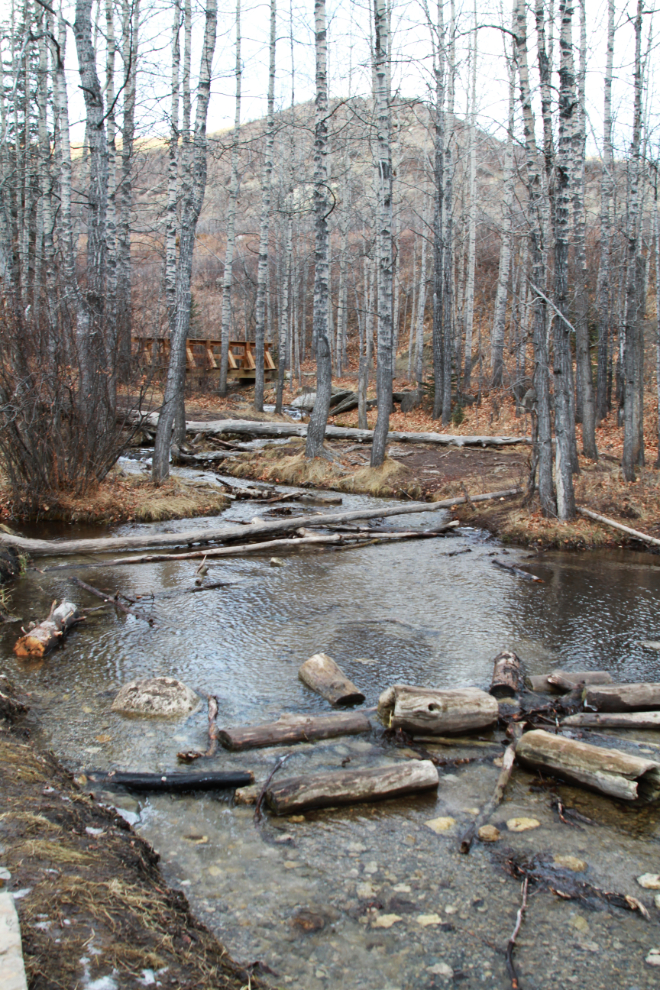
The park was also a great place for a family portrait, with my camera propped up on a picnic table.
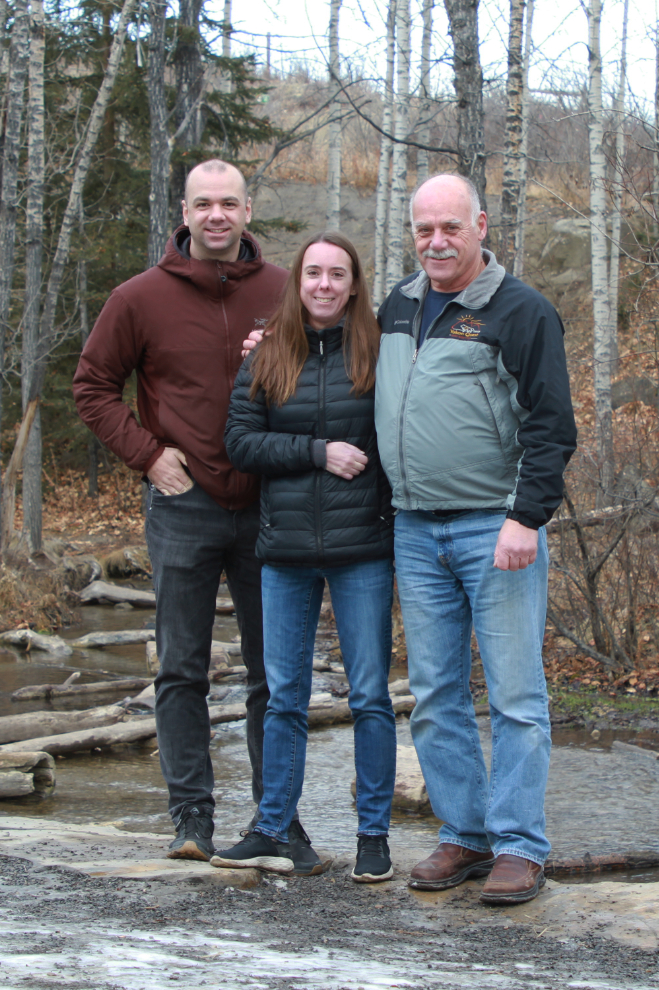
At 3:35 we were almost home and I needed a nap. It had been a wonderful day…
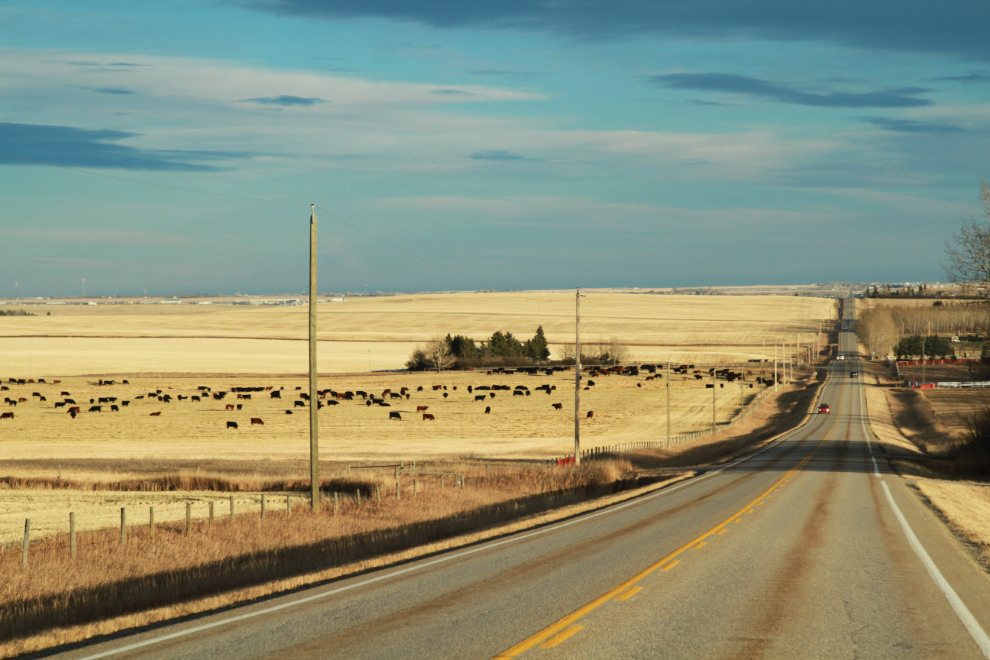
Murray
What beautiful animals. A lot of them look like Kayla. So wonderful there is a shelter for them.
Looks like a wonderful place to visit. Merry Christmas to you and your family.
Great post! Thanks
Thanks for the tour. We’d like to visit next time we’re out there.